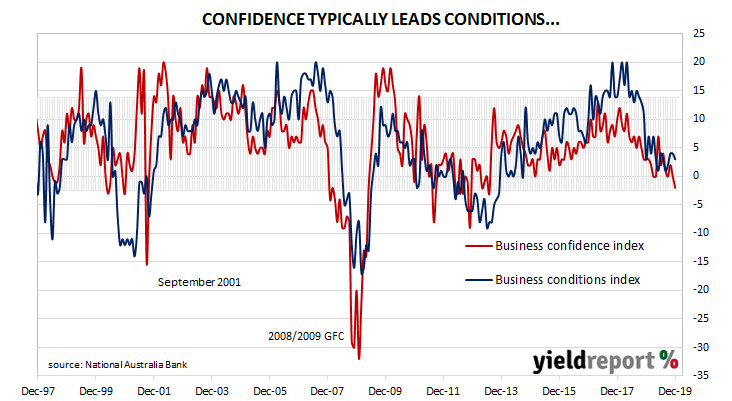Australian business conditions were robust in the first half of 2018 and a cyclical-peak was reached in April of that year. However, readings began to slip and, by the end of 2018, they had dropped to below-average levels. Forecasts of a slowdown in the domestic economy began to emerge in the first half of 2019. Since then, conditions readings have varied modestly while confidence readings appear to be trending lower.
According to NAB’s latest monthly business survey of 400 firms conducted in the first half of January, business conditions continued to bump along at below-average levels. Since late 2018, NAB’s conditions index bounced between 3, which is on the low side of normal and 7, which is about average. The index then broke through this lower bound in May 2019 and began to bounce between 1 and 4. The latest reading has registered 3, down from November’s reading of 4. While the conditions index remained in its recent range, the latest reading of NAB’s confidence index fell below zero, from November’s 0 to -2. Typically, NAB’s confidence index leads the conditions index by approximately one month, although some divergences appear from time to time.
While the conditions index remained in its recent range, the latest reading of NAB’s confidence index fell below zero, from November’s 0 to -2. Typically, NAB’s confidence index leads the conditions index by approximately one month, although some divergences appear from time to time.
In mid-December, NAB’s chief economist, Alan Oster, had said business conditions appear to “have stabilised at low levels”. He reiterated this description saying this latest survey “provides further evidence that activity stabilised in Q4.”
Westpac senior economist Andrew Hanlan agreed. He also noted any “rebound in response to policy stimulus” suggest the Federal Government’s tax cuts or the rate cuts of last year have “yet to materialise.”

